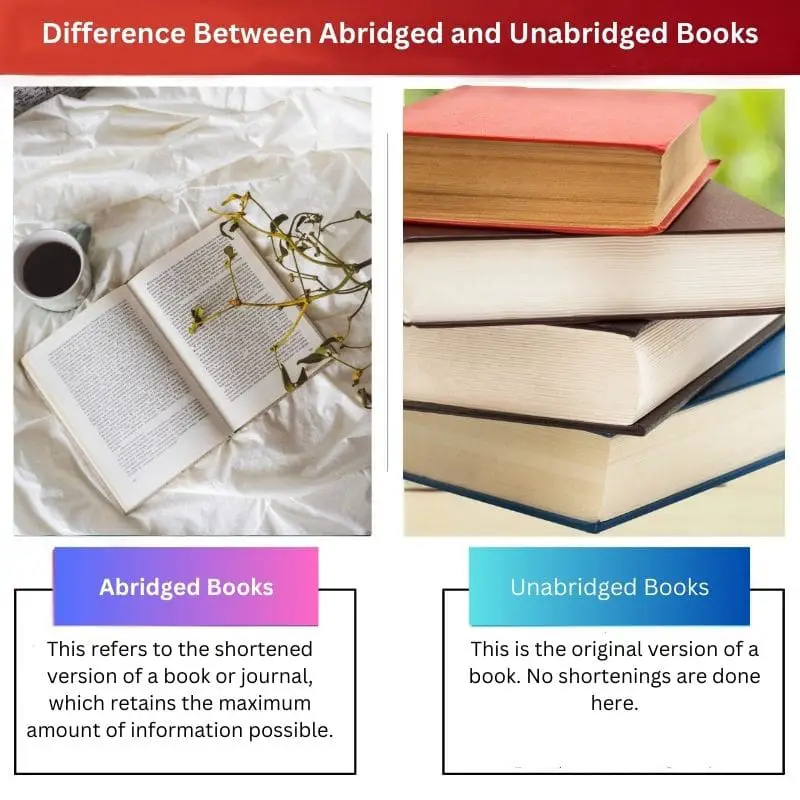In this fast-moving, modern, and technological day and age, we can safely say that people have been vastly divided into two groups.
However, it can not be argued that reading books is a very important and well-known method of sharpening one’s brain and increasing one’s vocabulary.
In plain terms, abridged means a piece of writing that has been shortened. With the rise of audiobooks and book summaries, one might question the importance of abridged books.
The best form yet is still the unabridged form of a book. Nothing is preferable to reading a full book and getting to know everything the book wants to convey without having anyone else cut out bits and pieces.
Key Takeaways
- Abridged books are condensed versions of original works, with sections or content removed to create a shorter, more accessible read; unabridged books are the complete, original versions containing all content as initially published.
- Abridging a book can make it more suitable for certain audiences or purposes, such as younger readers or time-limited situations; unabridged books provide the whole experience and depth of the author’s work.
- When choosing between abridged and unabridged versions, readers should consider their preferences for content depth, reading time, and fidelity to the original work.
Abridged vs. Unabridged Books
Abridged books are little, brief, and altered version audio version of the original books written by the book authors. Unabridged books the audio version of the original, books which not modified or altered and contain detailed plot and describe every little information to audience.

Comparison Table
| Parameters of Comparison | Abridged Books | Unabridged Books |
|---|---|---|
| Meaning | This refers to the shortened version of a book or journal, which retains the maximum amount of information possible. | This is the original version of the book. No shortenings are done here. |
| Purpose | Read when time is less at hand or information needs to be conveyed only, without extra literature. | Used when a person requires the total information or has enough time. |
| Places of use | Used in schools, offices, and places where pieces of literature are treated objectively or for evaluative purposes. | Used in reading clubs, personal use, etc. |
| Benefits | Does not consume much time. | Takes time to complete. |
| Shortcomings | All the information might not be given. I might be biased. | It is unbiased, and total information is received. |
What is an Abridged Book?
Abridged books are shortened books. There are various reasons why abridged books are so popular and why they are so widely used in so many areas.
They do so because the school’s job is to assess the students’ literary skills, and whether or not the student is curious to know the whole story is his/her personal choice.
Another good example is office places. They must bring statistical data and information to meetings, presentations, and briefings.
Abridging books is simple. One should go through the article or piece of writing a couple of times or more until one feels comfortable with it.

What is an Unabridged Book?
Unabridged books are when the book has not been shortened at all. All the chapters, plots, and subplots are intact as intended by the author and are perused in the same manner.
Unabridged books are a great way to gain knowledge or spend some leisure time or entertainment. It is widely known that reading is such an activity that increases your knowledge and sharpens your brain.
However, in this modern day and age, where the world is moving at an ever-increasing pace, it has become tough to find the time to read a book from start to finish.

Main Differences Between Abridged and Unabridged Books
- Abridged books take less time to complete when compared to their unabridged counterparts.
- Abridged books contain reduced information as they have been removed from the unabridged version.






